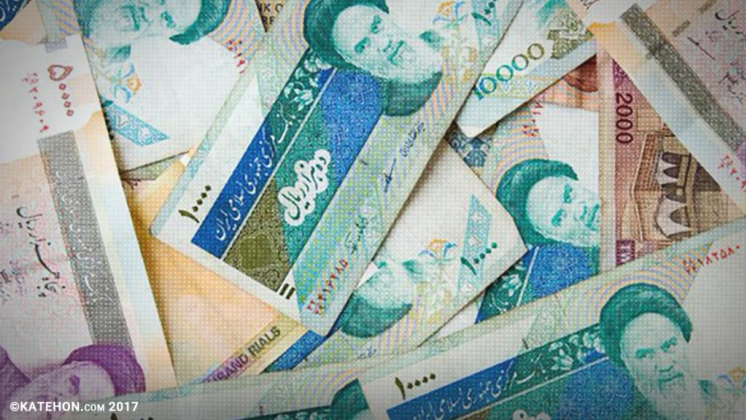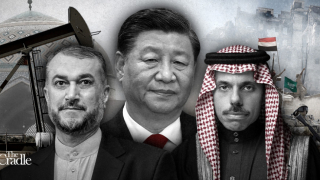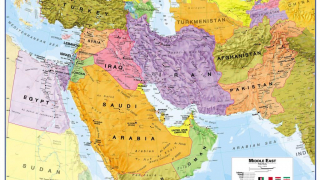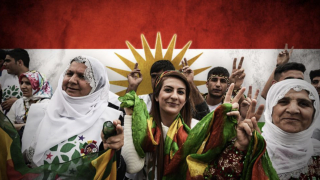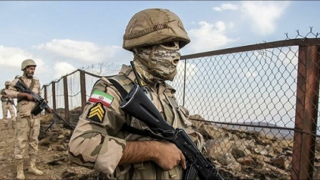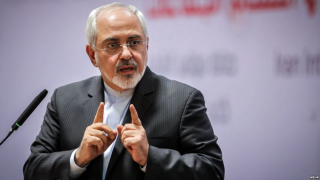The Dilemma of Iran's Rial
Despite the lifting of the international sanctions on Iran in accordance with the deal with international powers initiated in January 2016, Iran's economy is still suffering from a lot of problems, the main index of which is the continuous decline in Iran's currency value against the American dollar, which reached a new record low level in the last week of December 2016. This issue needs to be highlighted and the indicators and causes of the "record low” value of Iran's currency discussed.
Indicators of the Decline of Iran's Currency Value:
In the last week of December 2016, Iran’s exchange markets witnessed a record low in the Iran's currency value, after about 20 days from the announcement that the Iranian government will re-adopt "Altoman" as the official currency in order to tackle inflation by deleting zero from the current currency (each Toman equal 10 rials), according to a draft law approved by the government of President Hassan Rouhani on December 7, 2016.
However, on December 26, the exchange rate in the free markets reached 41,500 rials to the dollar; weakening from around 41,250 rials on December 25, compared with 35,570 rials in mid-September 2016, which widens the gap between the exchange rate in free markets and the official price which is still installed at 32,300 rials to the dollar.
Traders pointed out that the weakest level of the Iranian currency before that amounted to about 40,000 rials to the dollar, which hit in late 2012 and was affected by the additional sanctions imposed on Iran at that time. The Iranian currency had been around 10,000 rials to the dollar before falling sharply after the application of sanctions in 2012 to about 35,000 rials, and reached at the end of that year 40,000 rials, before settling at slightly lower limits.
How can the Decline in the Currency Value be Explained?
We can explain the continued decline in the value of Iran's currency by these main reasons:
Iran’s Financial Policy:
Data indicate that Iran's central bank cut its interventions to determine the price of the currency without revealing the reasons, and this led to sharp declines in its market value, as the supply and demand forces determine the price of currency in a level lower than the price put by the central bank. With the restrictions and obstacles imposed on bank transfers, which is still exist virtually and affect somehow on exchange rates and raise the cost of obtaining foreign currency, all of that raising the price of the foreign currency in the end.
It is known that, besides the exchange rate in the free markets, Iran used the official price at 32,317 rials to the dollar in some official transactions during December 2016. The widening gap between the official and free prices caused a discharge of the foreign currency outside the formal banking system. This was impacted by the government's inability to tighten its control over the parallel market, and its inability to meet the demand for foreign currency sufficiently, so that the government allowed some banks - recently, in December 24- to use free prices in its deals.
The Continuous Impact of international Sanctions:
Iran's resources of foreign currency have been affected negatively by the tense political relations with the West over the past few decades which led to the commercial blockade on Iran. The crisis became worse in the beginning of 2012 with the oil exports ban - the main source of foreign currency in Iran - and the continued freezing of Iranian assets abroad.
There is no confirmed official data about the growth of the cash reserve size over the past years, but international sources indicate it registered between 115 and 125 billion dollars in 2015, while according to the statements of the Iranian Minister of Economy, in December 2016, the Iranian foreign reserve size is a hundred billion dollars, which means a decline in foreign reserves at rates ranging between 15 and 20% in 2016, and this is a big drop in one year.
If Iran had received 32 billion and 600 million dollars from its frozen funds, waiting for releasing the remaining amounts at a rate of 700 million dollars a month, according to the announcement of the Central Bank Governor in Iran, Waliullah Saif, there is disagreement about the figures of total frozen funds. While it is estimated by the Iranian side at 150 billion dollars, it is valued by the American side at 55 billion. Instead of getting the remaining funds, Iran found itself demanded by the United States to pay large fines as part of fulfilling judicial proceeding provisions for compensating the victims of terrorism, totaling about 46 billion dollars.
The Repercussions of Trump's Victory:
Fear prevails in Tehran because the new US president, Donald Trump, may freeze Iran's financial assets and may also re-impose sanctions on it which had been alleviated recently with the nuclear deal approved by the Democratic Barack Obama's Administration. The Financial Times newspaper noted in a report that "financial markets in Iran have fallen by 5% immediately after the announcement of the Trump victory" and further read that "the decline in the markets was over fears that the next president may try to cancel the landmark nuclear agreement and bring Iran again into international isolation".
On the other hand, Trump’s success has increased the ceiling ambitions and optimistic outlook on the US economy, which is reflected directly in the US dollar's strengthening globally against other currencies, including the Iranian currency. This was an effect of him revealing his protectionist economic policy in regards to American industry and domestic products, the prevention of some trade agreements which deprive the US Treasury of tariffs, and increasing American product’s competitiveness on foreign markets.
Continuing Fears of Foreign Companies:
Iran’s fears over the new US Administration’s attitude, especially the threat to cancel the nuclear deal and return to the stringent economic sanctions that led to the erosion of oil exports, which is the main source of the Iran economy, are compounded by the fact that this would have a negative impact, of course, on the confidence of international financial institutions and banks in the Iranian economy, and it will be caution block for financing many commercial transactions in Iran.
In addition, the Iranian government has developed an exaggerated vision of achieve considerable resources in foreign currency since the lifting of the economic sanctions. These desired flows were not realized, thus weakening confidence in the Iranian economy, which affected the decline of the currency value.
Broad Reliance on Petroleum Sources:
In order to obtain foreign currency, Iran depends on such a fickle and unstable source as oil export revenues. With the decline in oil prices over the last two years, the government budget deficit has increased. Also, Western reports indicate that Iran's government believes that it can sell a barrel of oil for 65 to 70 dollars in 2017, but most likely its price will remain around 50 dollars a barrel.
Specialists said that Iran joined –under international pressure- the "Vienna Agreement" to cut crude oil production, which reduced much of its productivity ambitions to reach a level over four million barrels per day. Iran has failed to attract the 200 billion dollars needed as investments from international companies to develop the oil sector following the years of strict and harsh economic sanctions.
Conclusion
The main economic consequences of the Iranian currency’s reduced exchange rate are high inflation due to the high cost of imported goods and rising raw material costs as well, which will reflect in the full price of products manufactured. In addition, a notable consequence is the decline of investors who can participate in economies that have unstable exchange markets. If this situation continues, the weakness of the Iranian rial may become a political problem for the Rouhani administration before Iran's presidential elections which are scheduled for May 2017.
Source: Katehon.com
References:
- "Iran’s Currency Has Tumbled to a Record Low. It’s Probably Because of Donald Trump", http://fortune.com/2016/12/26/iran-rial-currency-donald-trump/, 26/12/2016
- "Why Iran's rial hit an all-time-low against the US dollar", http://www.euronews.com/2016/12/28/why-iran-s-rial-hit-an-all-time-low-against-the-us-dollar, 28/12/2016
- "Deciphering Iran’s sudden currency fluctuations", http://www.al-monitor.com/pulse/originals/2017/01/iran-rial-toman-rate-fluctuations-rouhani-unification.html, 7/1/2017
- "Iran to switch currency from rial to toman", http://www.presstv.ir/Detail/2016/12/08/496981/Iran-to-switch-currency-from-rial-to-toman, 8/12/2016
- "Iran rial hits record low", http://www.yourmiddleeast.com/business/iran-rial-hits-record-low_44690, 27/12/2016
- http://www.elghad.co/business/news-281440, 29/12/2016
- http://www.skynewsarabia.com/web/article/904111, 26/12/2016
- http://www.middle-east-online.com/?id=239108, 26/12/2016
- "تراجع أسعار صرف العملة الإيرانية: الأسباب والتداعيات"، مركز الخليج العربي للدراسات الإيرانية، 21/12/2016
- "دولرة" الأصول في إيران تهوي بالعملة المحلية قلقاً من تهور"ترامب"، موقع أرقام الالكتروني، 27/12/2016
- "8 ثغرات في الاقتصاد الإيراني أدت إلى انهيار العملة الإيرانية"، صحيفة الشرق الأوسط، 29/12/2016
- عدنان كريمة، "اقتصاد إيران يتضرر من سياستها الخارجية"، صحيفة الحياة اللندنية، 21/12/2016
- "الريال الإيراني يتهاوى أمام الدولار .. 450 % خلال 10 سنوات"، صحيفة الاقتصادية الالكترونية، 30/12/2016
- موقع الوحدة الإخباري، 29/12/2016

